| A
group of twenty-four students from Lynn Connorís
environmental studies class at
Old
Rochester
Regional
High School
in Mattapoisett launched the Ernestina
into the sailing season with the first program sail of 2003.
The class was
participating in the Watershed to Bay S.E.E.A.L. program,
comparing freshwater, estuary, saltwater marsh and marine
environments and studying the impact humans have on these
watershed ecosystems.
Skies were overcast
and winds were light in morning when we raised all four sails
in
New Bedford
Harbor
before heading out through the hurricane barrier in the wake
of an oil barge (green track).
Despite being chilly, the students worked hard testing
water chemistry and quality, taking a close look at plankton,
orienting themselves to the bay, learning about the history of
the Ernestina and
operating the ship.
After lunch, we
dropped the otter trawl and got everyone to help in hauling it
back in. Despite
anticipating flounder, crabs, lobster, molluscs and
other interesting benthic marine animals, everyone took a
close look at the variety of seaweed and small invertebrates
that we pulled up in the net instead.
The day finished with
the sun coming out, striking the sails and safely docking back
at the State Pier. Thanks
for a great sail!
In the evening the first group of members set sail out
around Clarks Point and back (blue track). There are many more
sailing opportunities coming for members throughout the year.
Program Coordinator: Kristen Sharpless
Captain: Amanda Madeira
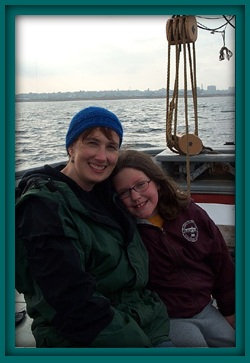
Lynn Connor and staffer
Polly Zajac's daughter, Cara back at the helm.

Students
in Lynn's class pose as the ship passes through New Bedford
Harbor's Hurricane Barrier outboaund.
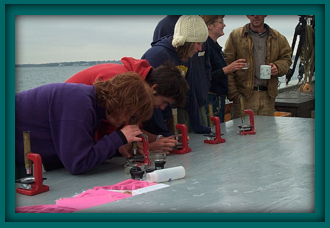
The microscopes open up
another micro-world of the sea,
|
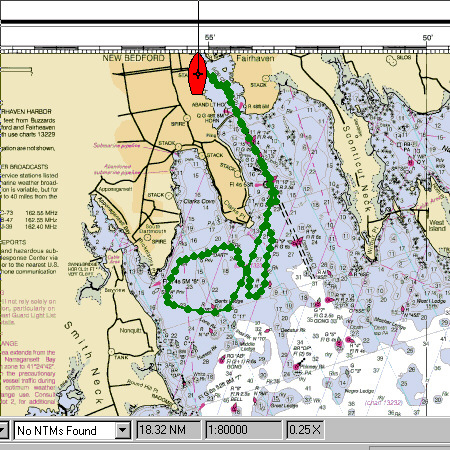
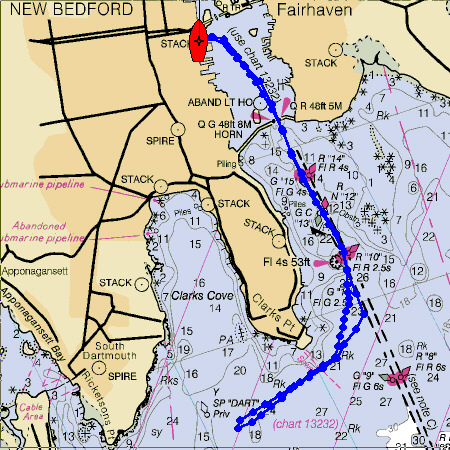
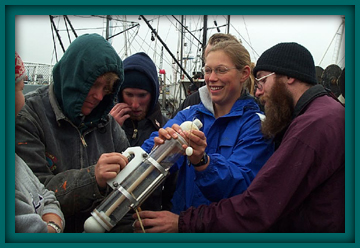
Kristen Sharpless and crew
ready the water sampling bottle. It can be sent to a down,
triggered and brought back to the surface to examine water at
various depths.
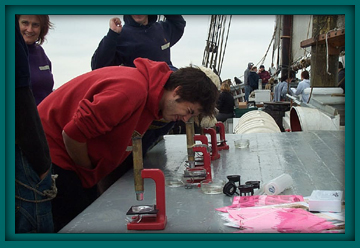
Plankton samples are
observed, species are keyed out and an estimate of biomass can
be determined.
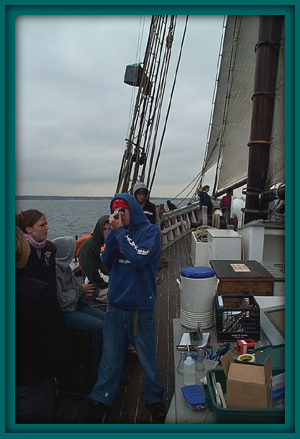
A refractometer is used
to measure salinity. The more salty the water, the more
light is refracted or 'bent.'
|













